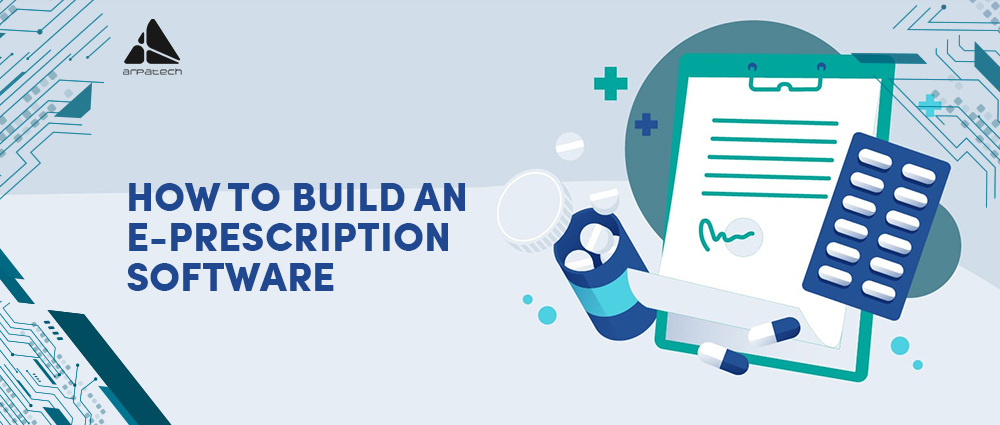How to Build an E-Prescription Software

Automation is the new norm in today’s tech-driven world, and the healthcare industry is no exception. Gone are the days when the database of the entire hospital was recorded in a diary. Today, everything in a healthcare setting has gone completely digital and automated, with hospitals switching their systems to e-prescription software to streamline their processes and facilitate their staff and doctors.
What is E-Prescription Software?
Software development companies create e-prescription software for physicians to generate an electronic prescription which is sent to the pharmacy stores at the same time. This software offers many advantages such as:
- Reducing the possibility of medical dosage errors;
- Helping doctors and pharmacy stores keep a record of all your prescriptions;
- Allowing visibility at the time of treatment;
- Offering a single platform for workflow prescription that helps establish coordination between the store and the consultant;
- Helping expedite the medical process;
- Saving patients time and allowing pharmacists to improve their services.
How to Build an E-Prescription Software?
Here is a list of basic steps to build e-prescription software.
1. Thorough Research
If building e-prescription software is important, its ideation is equally significant, which is why software development companies spend days on planning and research. Effective planning is the essence of this process; therefore, every element is taken into account during research. The key points are the challenges you might face to create an e-prescription software, how that is going to provide ease to your target market, platforms that can be easy for the people to use this software on, the highlights, or USPs of this software, and more.
2. Required Features
Once, the basic research is completed, you have to decide the required features for this e-prescription software such as:
- Patients: personal data, medicine information, payment details, prescription, and medical history, order history, and more.
- Doctors: patient history, patient report, prescriptions, documentation details, medical records, availability of medicines, and more.
- Pharmacists: order history, payment tracking, patients’ information, doctors’ information, and more.
You can add as many categories for the features as you want to your software program.
3. Decide the Platform
After analyzing your target market, you can decide the platform for your desired e-prescription software. You can determine if a web application or smartphone application can be suitable for your audience.
4. Right Software Development Company
In this step, you have to run your contacts and look for the right software development company that can assist you in developing your desired e-prescription software. Coordinate with the company that will bring out your vision and ideas to reality.
5. Engagement Model
Once you have chosen the software development company, it’s time for you to decide on the engagement model that you think can work the best for your e-prescription software. If the scope of your project is pre-defined, you can opt for the Turnkey model. If you have dynamic work requirements, you may choose the Dedicated hiring model, or if you are unclear with the requirements of the software, Time and Material Basis Model is the best fit.
The Bottom Line
Integrating automation in the healthcare sector indicates progress because everyone wants fast processes and cost-saving and doesn’t wish to compromise on security and accuracy. The abovementioned steps for building e-prescription software can be advantageous for the team of professionals who are committed to establishing an efficient process in the health organization.
Arpatech
Latest posts by Arpatech (see all)
- How to Choose the Right Software Development Company in Dubai - July 15, 2024
- Optimizing Last-Mile Delivery for E-Commerce Fulfillment: Top 4 Keys to Customer Satisfaction - July 9, 2024
- Best Tools And Resources For Startups – A Complete Guide - February 24, 2022

 Careers
Careers


